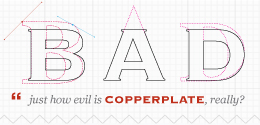- Recent Photo

- Other Notes
- Previous Article
- Next Article
Commercial vs Fine. Art, that is.
Nov. 14th 2009
The difference between commercial art and fine art is also the difference between starvation and survival, I think. If an artist, led by sensibilities and convictions that don’t allow him to produce works that are mainstream or appreciated by the masses – which would mean great sales and therefore survival – chooses instead to produce works that are only appreciated by a select, eccentric few and not executed on demand/ patronage but on a whim, then – if my long-windedness allows me to get to the point – that person is a fine artist.
On the contrary, a commercial artist executes work that his art director has directed him to, or if independent, work that his freelance endeavors have yielded for him, work that will eventually appear on billboards, in periodicals and other printed texts and media, on apparel etc. He is guaranteed a sale, and an easy sale at that.
Of course both kinds of artists have that intrinsic drive to create but I think the one that chooses to have job security is smarter than the one who won’t relent to societal, industry and/ or mainstream requests and will therefore starve. Hunger builds character, yes, but money builds so much more. Houses, for instance, that you and your extended family can live in.
That’s the difference.





Yours is a fine philosophy to live by as an artist by trade, but there are a few snags that prevent it from being the universal opinion. First, fine artists do indeed make money, sometimes, if that’s their goal. There always has been a market for art based purely on aesthetics. Where commercial art sells t-shirts and other commodities, fine art sells itself. Next, fine art can be produced by wage workers, aristocrats, etc. Fine art doesn’t require the artist to starve. Finally, it’s inaccurate and a little distasteful to say that commercial artists are smarter than fine artists. They may certainly be more business savvy or work toward a set of ideals based on material gain, but their goals, which are predetermined by the society in which they work, do not necessarily suggest that fine artists are stupid for rejecting or avoiding them. On a related note, I would argue that people are typically involved in fine art because they want to set the tone of what the world finds aesthetically pleasing. Commercial art, on the other hand, by nature has to follow the guidelines of what is already pleasing in order to make the sale, because the integrity of a product may ride on whether or not consumers find it agreeably represented – consumers won’t reconsider the value of an art just because it’s tagged on a product that they will buy regardless of its aesthetic.
time:6:23 pm
I certainly didn’t mean to insinuate by my statement that commercial artists, who might be disinterested in the arguably nobler quest of the fine artist are by any means superior. In thought or otherwise.
On the other hand, it would be equally pretentious to presume that commercial artists aren’t trendsetter and rely, as you suggest, on whatever trends the beaux-artist sets.
time:6:48 pm